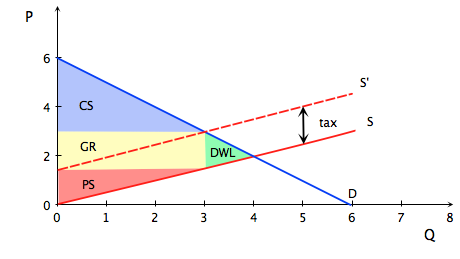Back to Courses









Business Essentials Courses - Page 15
Showing results 141-150 of 645

Forex - Trading Around the World
In this course, we’ll introduce you to the foreign currency market, including who participates in it and some of their reasons for doing so. You’ll also gain an understanding of the complex nature of certain trading products, as well as some of the risks investors typically face.
We’ll also explore the use of margin in your account and provide you with a case study, showing how to invest in the stock of a non-domestic company listed on a foreign exchange, as well as guide you through entering an overseas trade on an online trading platform.
By the end of this course, you should gain a broad overview of the foreign exchange market, understand certain major currency products, and acquire some practical skills that will help you to dive-in and make trades on your own.

Examine 508 Compliance & Accessibility in Chrome Extensions
Creating compliant material is the right thing to do, but it can seem like an expensive undertaking and an enormously high bar to meet. In this project you will become familiar with Federal 508 compliance standards and how they can become an asset to an organization’s goal of connecting individuals with content in a meaningful way. You will also gain hands-on experience with a no-cost technique for one component of accessibility testing. That is testing for color blindness accessibility with the Colorblindly extension in your Chrome Browser.
By the end of this project, you will be able to confidently leverage Chrome browser extensions to test information accessibility, so that you can ensure that as much of your audience as possible can intuitively take in and interact with your organization’s information.
Note: This course works best for learners who are based in the North America region. We’re currently working on providing the same experience in other regions.

Creating an Interactive KPI Management Dashboard in Tableau
In less than one hour, you will learn how to connect to data, create key performance indicators, create sparkline charts, create a dashboard map, create dual axis charts and put it all together in a well-formatted and interactive dashboard.
Note: This course works best for learners who are based in the North America region. We’re currently working on providing the same experience in other regions.

Diversity and Inclusion for HR Professionals
Welcome to Diversity & Inclusion for HR Professionals. In this course we will review the changing landscape of the workplace and discuss the current change drivers that make Diversity and Inclusion an important focus for your organization. We will explore strategies for creating an inclusive climate and a sense of belonging, and how bias and microaggressions can be mitigated. Finally, we will explore the business case for Diversity and Inclusion strategies, and you’ll have the opportunity to develop a DEIB tailored to your organization and situation.
Learning goals for this course include:
- Recognize the impact of DEIB on company culture
- Recognize how conscious and unconscious bias can impact the workplace
- Identify how thought diversity supports innovation and challenges conformity
- Develop a Diversity, Equity, Inclusion and Belonging Plan for your organization
- Explore why innovation is the currency of the future
Supply Chain Principles
This course will provide a solid understanding of what a supply chain is all about. The course:
- Provides an introduction to Supply Chain
- Leverages graphics to promote the Integrated Supply Chain model
- Emphasizes understanding the Extended Supply Chain
- Presents a holistic approach – Incorporating People, Process, and Technology
- Calls-out industry-specific supply chain
- Leverages discussions, videos, quizzes, and questions for consideration
- Provides awareness of career path opportunities
- Presents emerging and futuristic trends in supply chain
and given that at GT we are focused on developing what’s next in the world, we include Discussion of emerging and futuristic trends in supply chain. There is very little math involved in this course – so don’t worry at all about your math skills.
The course incorporates reading materials that were developed as part of a $24.5M TAACCCT grant awarded by the U.S. Department of Labor’s Employment and Training Administration to the LINCS in Supply Chain Management consortium.

Audience Demographics with Facebook Audience Insights
Throughout the project, you will be able to identify and choose the primary
audience you want to target, define your audience demographics and
identify your audience's preferred device and activities.
Moreover, you will also be able to analyze how people are engaging with
your page and view metrics about your page's performance.
Microeconomics Principles
Most people make the incorrect assumption that economics is ONLY the study of money. My primary goal in this course is to shatter this belief. During this course, we will be addressing the above questions as well as many more relating to:
-the environment
-love and marriage
-crime
-labor markets
-education
-politics
-sports
-business
My main goal is to show you the way economists think and how to use this analytical system to answer questions related not only to these and other important human issues but to anything you end up doing with your life after this class. After all, as you will quickly find out, I believe that everything is economics!

Managing an Agile Team
While agile has become the de facto standard for managing digital innovation teams, many wonder if they’re doing it ‘right’. Twitter is full of jokes about how teams say they do agile but don’t ‘really’ do it. The reality is that getting the most out of agile is less about observing specific procedures and more about how a team focuses and measures their progress.
Rather than just boring you with an accounting of agile methodologies, this course focuses on helping you better charter your team’s focus, definition of success, and practice of agile. While learning about agile mainstays like Scrum, XP, and kanban, you’ll also learn to help your team ask the right questions about how they’re working and facilitate good answers on how agile can help.
This course is supported by the Batten Institute at UVA’s Darden School of Business. The Batten Institute’s mission is to improve the world through entrepreneurship and innovation: www.batteninstitute.org.

Leadership in Multinational, Cross-Cultural Teams
Whether you are currently a manager or not, you should now be ready to learn to play a leadership role in a multinational team. Leadership is more than management, and culture greatly affects what is expected of leaders. For instance, some cultures expect their leaders to give directives; others expect them to facilitate so that everyone on the team has a chance for their voice to be heard. No matter which way they lean, you are likely to hear “that’s just the way it’s done” if you try to shake things up. Leadership requires adapting your style to build comfort from team members with different backgrounds than yours while also helping change the narrative for people who don’t want to adapt to your strengths. You need to help others find the levers to pull that work for them to adjust to a cross-cultural environment. As leaders you also need to be constantly learning to prepare for the inevitable changes of the future? By looking into the future, how will different cultures grow, and how will climate change and technology fundamentally alter the line between physical and virtual space. What will all this mean for multinational team leadership in the future?

Microeconomics: When Markets Fail
Perfect markets achieve efficiency: maximizing total surplus generated. But real markets are imperfect. In this course we will explore a set of market imperfections to understand why they fail and to explore possible remedies including as antitrust policy, regulation, government intervention. Examples are taken from everyday life, from goods and services that we all purchase and use. We will apply the theory to current events and policy debates through weekly exercises. These will empower you to be an educated, critical thinker who can understand, analyze and evaluate market outcomes.
Popular Internships and Jobs by Categories
Find Jobs & Internships
Browse
© 2024 BoostGrad | All rights reserved